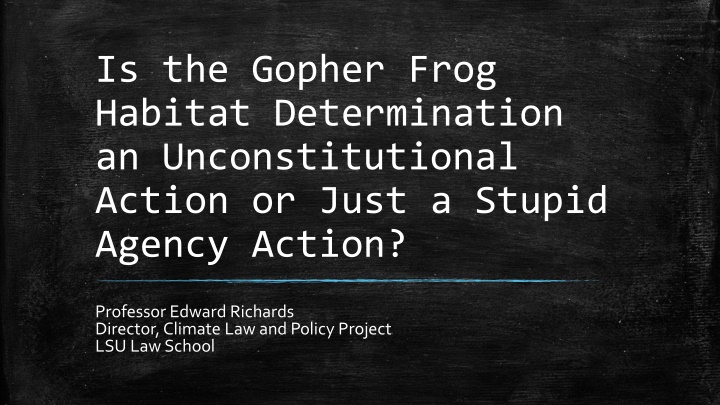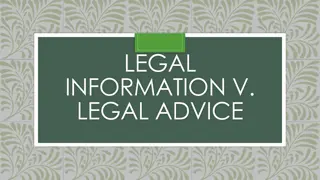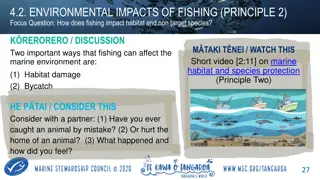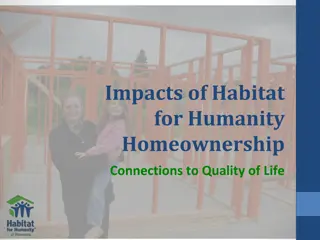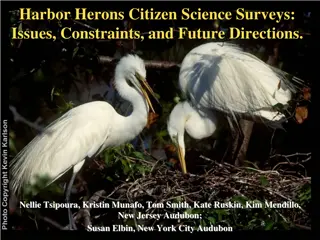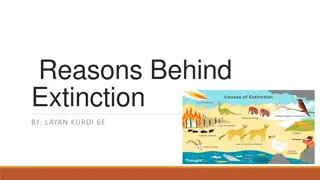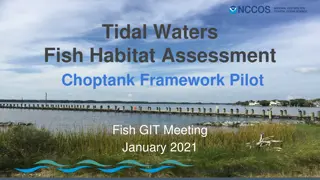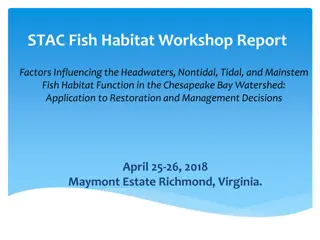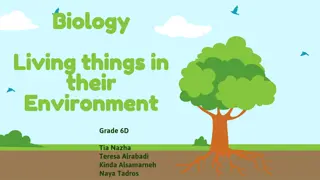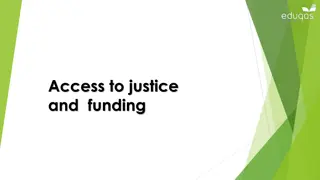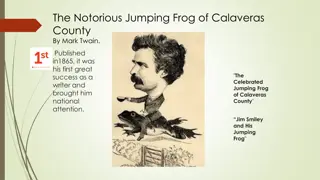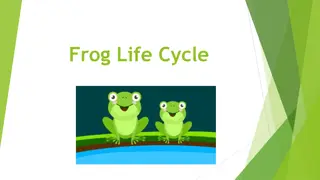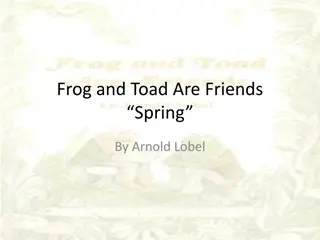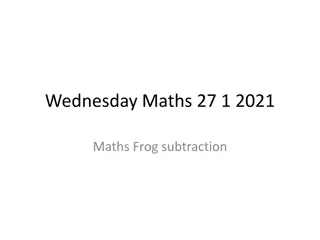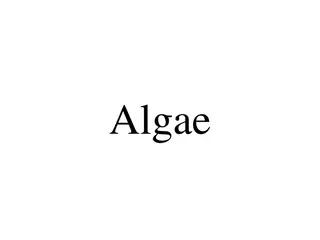Legal Analysis of Gopher Frog Habitat Determination
Professor Edward Richards from LSU Law School discusses the potential constitutional issues raised by the designation of critical habitat for the gopher frog. The analysis includes examining interstate commerce issues, regulatory takings, wetlands permitting under the CWA, and the proper designation under the Endangered Species Act. The discussion highlights the complexity surrounding habitat protection laws and their impact on property rights and environmental conservation efforts.
Uploaded on Sep 06, 2024 | 0 Views
Download Presentation

Please find below an Image/Link to download the presentation.
The content on the website is provided AS IS for your information and personal use only. It may not be sold, licensed, or shared on other websites without obtaining consent from the author.If you encounter any issues during the download, it is possible that the publisher has removed the file from their server.
You are allowed to download the files provided on this website for personal or commercial use, subject to the condition that they are used lawfully. All files are the property of their respective owners.
The content on the website is provided AS IS for your information and personal use only. It may not be sold, licensed, or shared on other websites without obtaining consent from the author.
E N D
Presentation Transcript
Is the Gopher Frog Habitat Determination an Unconstitutional Action or Just a Stupid Agency Action? Professor Edward Richards Director, Climate Law and Policy Project LSU Law School
Potential Constitutional Issues
Interstate Commerce Issues Is the Frog in Interstate Commerce? Some have argued that this in a unconstitutional use of the Commerce Clause because the frog is not in interstate commerce. Previous courts have ruled that individual endangered species are part of the general protection of biological diversity, which does affect interstate commerce.
Is the Designation of Critical Habitat a Regulatory Taking? The Lukas standard for a regulatory taking is that the regulatory action reduce the value of the property to little or nothing by not allowing any use of the property. Assuming for the purpose of argument, that this determination is proper, the impact could range from no economic impact to several million dollars. Since there are no frogs, nothing is going to take frogs, so the land still has its current value as a tree farm. If no federal permitting is required for development, then there will be no impact. If permitting is required, then FWS will be consulted by the permitting agency and might impose some limitations on development.
The Real Threat to Value Wetlands Permitting under Section 404 of the CWA If the Corps determines that some of the land is subject to wetlands permitting, that portion of the land will have diminished value. The loss of value is because of the limitations on development posed by the no net loss of wetlands policy. The ESA determination will not make this much worse. The United States Supreme Court has so far rejected claims that 404 permitting is a taking because there is still residual value you do not have to develop the land. Under current EPA policy, following Scalia s opinion in Rapanos, this land would be non-jurisdictional. You could fill the ponds without a permit and end the frog question.
Is This is a Proper Designation under the Endangered Species Act?
The Endangered Species Act Intended to project habitat, but written in terms of protecting endangered species. Sold as protecting charismatic mega fauna polar bears, bunnies, and lovable creatures. Congress would not have passed the bill if it was just protecting the habitat. Mostly protects obscure and often invisible species, undermining political support.
What is Critical Habitat? The ESA defines critical habitat as: (1) portions of the geographic area occupied by the species at the time of listing which have physical or biological features essential to the conservation of the species which may require special management or protection; and (2) areas outside the species range at the time of listing upon a determination by the Secretary [of Interior or Commerce] that such areas are essential for the conservation of the species.
The Chevron Problem: Can Unsuitable, Unoccupied Habitat be Designed as Critical? The statute is silent on whether the unoccupied habitat has to be suitable at the time of designation. The law can thus either support or not support designation of unsuitable unoccupied habitat. The court can look for congressional intent as to whether protecting unsuitable, unoccupied habitat is allowed by the statute.
A Rationale for Protecting Unoccupied, Unsuitable Habitat If the unoccupied, unsuitable habitat will become the logical extension of the range of an endangered species through predictable natural processes. Upland coastal areas on low slope coast lines which will be turned into wetlands as sea level rises. These can be prospective critical habitat if there are endangered species in the coastal wetlands that will migrate inland with sea level rise. Protection in this case means blocking development that will prevent the natural ecological succession. This does not require the landowner to make the land suitable, only to avoid blocking its transition to suitable habitat. If there is no natural process that will make the land suitable, and the FWS cannot force the landowner to make it suitable, this seems an unreasonable extension of Congressional intent an elephant in a mousehole?
The Reviewability of the Determination If the court finds that the designation of unoccupied, unsuitable environment with no mechanism for becoming suitable, is within the Congressional intent, there is a second administrative law question: Is the decision of the secretary to not exclude the Louisiana parcel reviewable by the court? The statute is written to encourage designations of habitat: Exclusions of critical habitat from determinations must be justified. Not excluding is left to the secretary s discretion. If the court finds this is a proper designation, then traditional administrative law is that the court does not second guess a purely discretionary choice by the agency.
